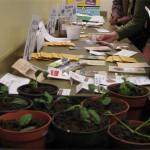 For the past three years, the Gorge Tillicum Urban Farmers have met in January, ahead of the larger “seedy” events in Victoria and elsewhere, in order to swap and share our locally grown seeds. It’s one of my favourite things about this neighbourhood’s delightfully mixed group of gardeners, chicken-lovers and food geeks. There’s no guarantee the seeds will sprout, no fancy packaging and no cost. The seeds mostly come from plants that GTUF members have grown in their own gardens and then saved, so are tested and adapted to our local climate. This gives them a big advantage over seeds purchased from major seed producers, who may be in a completely different growing zone from the consumer. Our seeds also come with an opportunity to tap the knowledge of the producer: could be someone with years of skill, or maybe just a delighted first-timer.
For the past three years, the Gorge Tillicum Urban Farmers have met in January, ahead of the larger “seedy” events in Victoria and elsewhere, in order to swap and share our locally grown seeds. It’s one of my favourite things about this neighbourhood’s delightfully mixed group of gardeners, chicken-lovers and food geeks. There’s no guarantee the seeds will sprout, no fancy packaging and no cost. The seeds mostly come from plants that GTUF members have grown in their own gardens and then saved, so are tested and adapted to our local climate. This gives them a big advantage over seeds purchased from major seed producers, who may be in a completely different growing zone from the consumer. Our seeds also come with an opportunity to tap the knowledge of the producer: could be someone with years of skill, or maybe just a delighted first-timer.
This year 60 of us were joined by affable seed guru Dan Jason, the visionary behind Salt Spring Seeds and the Seed and Plant Sanctuary for Canada. He’s also the star of Gardens of Destiny, a documentary about the importance of seed saving. Jason had put out a call a year or so ago inviting communities to consider establishing community seed banks, in order to preserve locally-adapted plant varieties (all seeds are under threat from seed patents and GMO contamination by seed multinationals) and to provide a hedge against food insecurity. Some of GTUF’s members ran with the idea and we’re in process of starting our first plantings for a seed bank this year.
and the Seed and Plant Sanctuary for Canada. He’s also the star of Gardens of Destiny, a documentary about the importance of seed saving. Jason had put out a call a year or so ago inviting communities to consider establishing community seed banks, in order to preserve locally-adapted plant varieties (all seeds are under threat from seed patents and GMO contamination by seed multinationals) and to provide a hedge against food insecurity. Some of GTUF’s members ran with the idea and we’re in process of starting our first plantings for a seed bank this year.
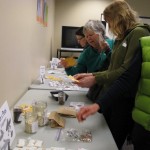 After the first half hour of picking and choosing for our gardens, we settled in to hear Jason speak and answer questions on seed saving and community seed banks. He began with a primer on why we should do this: in short, because our food seeds are at risk: multinationals have been ramming through GMO legislation despite the lack of testing for food safety, the potential health dangers from unlabelled GMO ingredients (which are in nearly every processed food you can buy in North America) and cross-contamination of our food supply with GMO. This puts our ability to grow safe and nourishing food at risk.
After the first half hour of picking and choosing for our gardens, we settled in to hear Jason speak and answer questions on seed saving and community seed banks. He began with a primer on why we should do this: in short, because our food seeds are at risk: multinationals have been ramming through GMO legislation despite the lack of testing for food safety, the potential health dangers from unlabelled GMO ingredients (which are in nearly every processed food you can buy in North America) and cross-contamination of our food supply with GMO. This puts our ability to grow safe and nourishing food at risk.
The good news is that Jason believes we can take matters into our own hands and make a positive difference, if we join with our neighbours to safeguard our seeds and learn to grow food:
“Community seed banks are an extension of something people have done throughout recorded history. With a community seed supply, people become the custodian of their own seeds; this empowers a community to grow what is wanted to eat there.”
He stressed the importance and also the ease of saving your own seeds:
“Plants produce a phenomenal amount of seeds. You mostly get so much back from a single plant it doesn’t take a huge number of people to do this. You maybe need just a couple of dozen in each community. You don’t have to be an expert in all seeds. Just go with the people who know tomatoes or beans or parsley, and make them the mentors for those varieties. They can advise and teach others about details of saving seeds in a particular family.
Jason was particularly encouraging about the prospects for urban farmers who are buffered from cross contamination by GMOs because of their distance from large farms, the only economically-feasible places GMOs can be grown. He spoke in praise of the higher yields that any small scale production can get (large scale industrial producers are handicapped by input costs, including fuel and equipment, and by the risks of monoculture; small growers can diversity to protect against crop losses, and can monitor and deal with potential problems more easily) and observed that growing in neighbourhoods we can share the strengths and weaknesses of our situation: the shady side of a street growing greens and the sunny side growing the heat-loving crops like tomatoes and peppers.
More of the same message seems to be contained in this book, The Vegetarian Myth: Food, Justice and Sustainability which I suspect is not the simple attack on vegetarianism that its title suggests, but more of what its subtitle says. A preview in this video:
And finally, I will be nursing myself through the dragonly blasts of wind and water that have started this year with sips from a precious bottle of Sipsmith Gin, made in Hammersmith, London which I brought back from the UK. I’d heard a bit about on a Radio 4 program that talked to artisanal gin makers in London and am looking forward to taste-testing it against my favourite local brand, Victoria Gin.
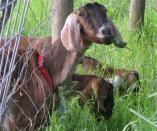
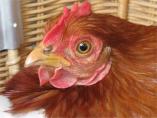
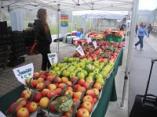

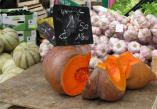


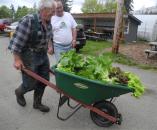
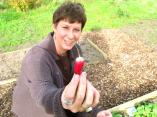

Pingback: Chocolate, gastronomy and Seedy Sunday | Iambic Cafe